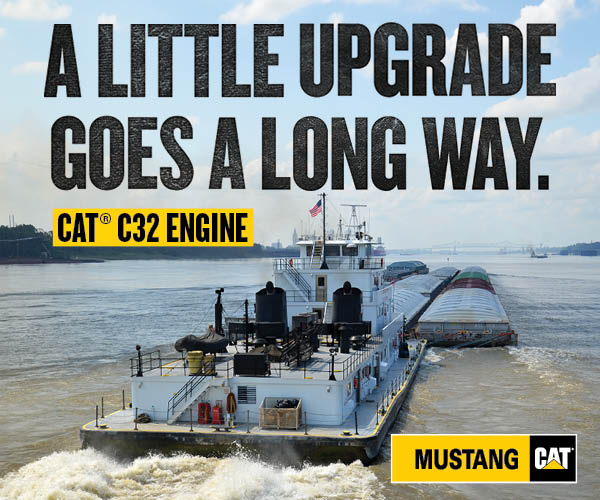Dangerous Condition of the Pilottown Anchorage
The Pilottown Anchorage is the lowermost anchorage on the Mississippi River Ship Channel. The anchorage is intended to provide a safe location for vessels with a draft of 45 feet or more, but at present, much of the anchorage is shallow enough to walk across.
The Big River Coalition has included the dredging of Pilottown Anchorage as an urgent request to Congress and the U.S. Army Corps of Engineers the last three years. The anchorage is severely deficient, and much of this sedimentation is directly attributed to a nearby coastal restoration project, the West Bay Sediment Diversion.
The Pilottown Anchorage is an authorized anchorage, recognized by the U.S. Coast Guard as comprising “an area 5.2 miles in length along the right descending bank of the river from Mile 1.5 to Mile 6.7 Above Head of Passes (AHP), extending in width to 1,600 feet from the left descending bank of the river.”
The diversion at West Bay (Mile 4.7 AHP), first authorized in the early ‘90s and completed in 2003, removes an average flow of approximately 25,000 cubic feet per second from the channel. The loss of stream power forces sediment to settle out of the water column, with much of that sediment collecting in Pilottown Anchorage.
The shoaling is severe enough that small recreational fishing boats have gone aground where vessels with a draft of 45 feet or more should be able to anchor. The risk this poses to the nation’s economy cannot be overstated.
The Pilottown Anchorage is the only anchorage available for vessels encountering emergency situations in the area of Southwest Pass. At present, a vessel caught in fog or experiencing engine or propulsion failures would be forced to anchor in the ship channel, likely closing the channel to all vessel traffic.
Historically, vessel groundings in the Pilottown area have shut vessel traffic down for days to weeks. The longest closure of the ship channel in modern times occurred in 1989, following the broadside grounding of the mv. Marshal Konyev. The ship blocked all commercial traffic entering and exiting the Mississippi River Ship Channel for 21 days.
A broadside grounding is the most likely to occur with a downbound vessel and represents the worst-case scenario. If the bow of a ship gets a little outside of the channel, the nose would go aground in Pilottown Anchorage, and the current in the channel would force the stern toward the opposite bank. The channel is only 750 feet wide, and many large vessels transiting this reach are longer than the channel is wide. Such a grounding would again block all traffic from transiting in or out until the vessel was refloated.
Broadside groundings change the hydrology, with the loss of stream power along the ship encouraging deposition. In the case of the Marshal Konyev, the ship traveled 1.5 miles downriver in the bed of sediment it created until it was refloated. Dredging the Pilottown Anchorage remains our No. 1 concern due to the dynamics described above and the risks of repeating a preventable extended closure of the nation’s economic superhighway.
The simple fix is for the Corps to dredge Pilottown Anchorage, but the Corps continues to question whether it has the authority to dredge in anchorages. Despite that assertion, the Corps performed channel maintenance dredging in the Pilottown Anchorage prior to the construction of West Bay and three times afterward, in accordance with a channel maintenance agreement included in the Coastal Wetlands Planning, Protection and Restoration Act, which served as mitigation for the acknowledged shoaling the diversion would have in the Pilottown Anchorage.
Congress ratified Section 106 of the Water Resources Development Act of 2020, which was intended to ensure the Corps’ authority to dredge in Coast Guard anchorages. Section 106 states, “The Secretary may perform dredging at federal expense within and adjacent to anchorages established by the Coast Guard pursuant to existing authorities.”
The Corps continues to question the authority under Section 106 despite its own implementation guidance document, which states, “No additional guidance required.”
Congress intended for Section 106 of WRDA 2020 to ensure that the Corps had the authority to dredge in anchorages. I wonder if the Supreme Court’s overturning of the Chevron Doctrine applies here? The Corps maintains the ship channel in this reach at 50 feet, and yet just outside the channel the depth over a wide reach of this 5.2-mile anchorage ranges from 20 feet down to single digits.
Dredging of the Pilottown Anchorage is a critical component of water management. By removing this plug of sediment, the river’s natural flow and scour power will be restored to this reach, which would reduce dredging costs. Restoring the flow to the delta would also serve to remove an obstruction to safe navigation and protect commerce, restore land and wetlands, reduce saltwater encroachment and build habitat in the environmentally sensitive Bird’s Foot Delta.
The Big River Coalition’s federal priority list is as follows: dredge Pilottown Anchorage, which is currently a hazard to safe navigation; address the multiple crevasses indicating the collapse along the unprotected eastern side of the Mississippi River Ship Channel Between Belle Chasse and Head of Passes; focus on the USACE Lower Mississippi River Comprehensive Management Study; and repair and realign U.S. Coast Guard aids to navigation on the Mississippi River Ship Channel.
Sean Duffy is the executive director of the Big River Coalition and vice president of the Louisiana Maritime Association. The Waterways Journal welcomes submissions of guest editorials and letters to the editor. Those may be submitted to frank@wjinc.net.



